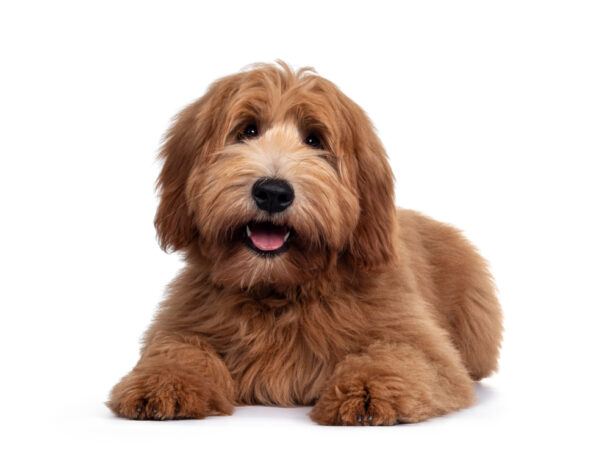LifeWithMyDogs is supported by our audience. When you purchase through one of our links, we may earn a small affiliate commission. As an Amazon Associate I earn from qualifying purchases. Your cost is not affected.
**********
Hey there, pet parents! Today, we’re delving into a topic that might not be the first thing on your mind when you think about taking care of your furry friend: dental hygiene. Yep, just like us humans, our dogs need some TLC when it comes to their pearly whites.
In this guide, we’ll walk you through everything you need to know about brushing your dog’s teeth. From why it’s essential to the step-by-step process, we’ve got you covered. So grab your pup, and let’s embark on a journey to a happier, healthier smile for your four-legged buddy.
How to Brush Dog’s Teeth: A Step-by-Step Guide for Pet Owners

Maintaining good dental hygiene is crucial for your dog’s overall health and well-being.
Just like humans, dogs can develop plaque, tartar, and gum disease if their teeth are not properly cared for. Regular teeth brushing can help prevent these issues and also combat bad breath.
Brushing your dog’s teeth may seem daunting, but with patience and the right approach, it can become an easy and rewarding part of your pet care routine.
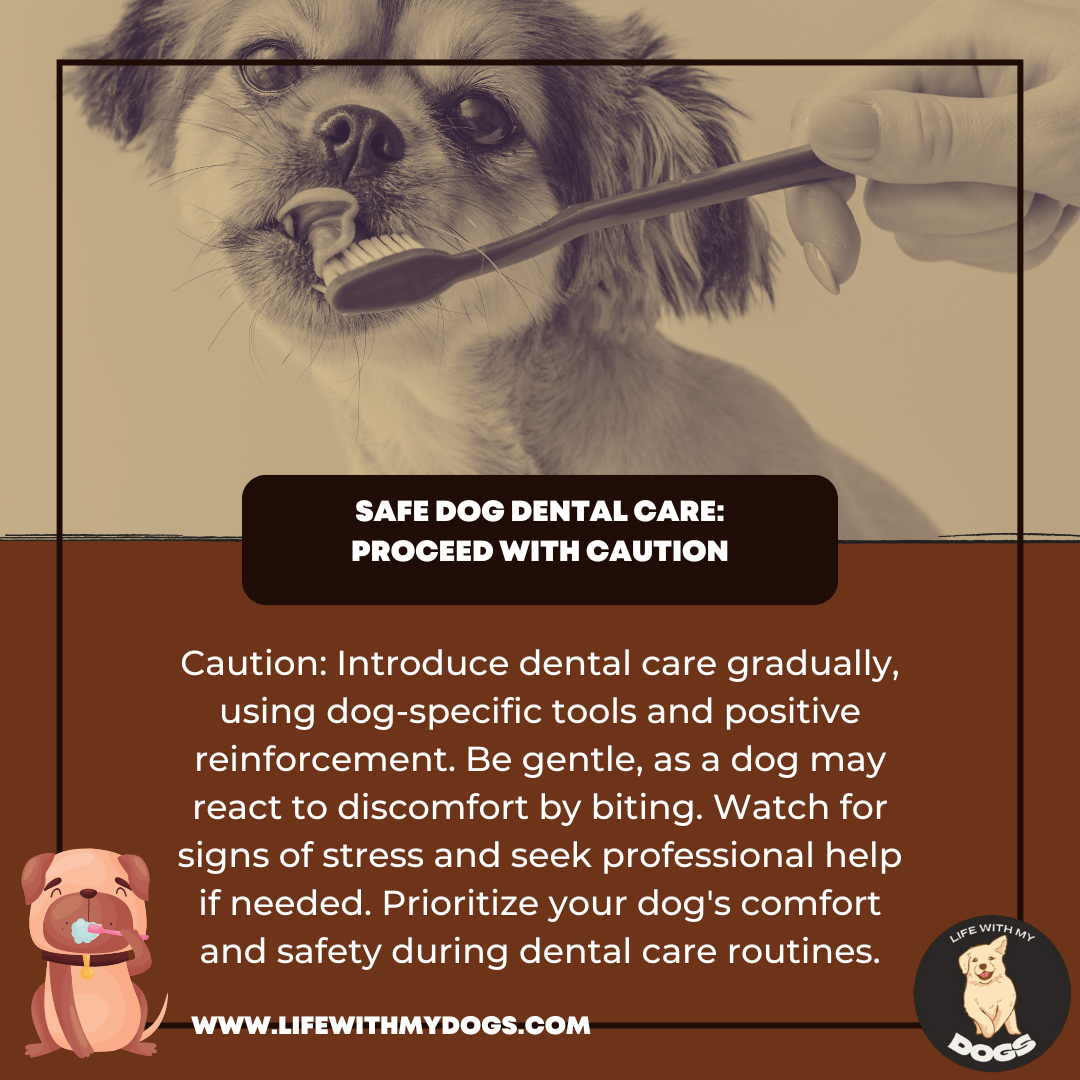
To start, it’s important to choose the correct supplies.
Make sure to get a dog-specific toothbrush and toothpaste, which is flavored to make the experience more enjoyable for your furry friend.
Setting a regular schedule and gradually acclimatizing your dog to the process of having their teeth brushed will help in minimizing resistance.
Rewarding your dog after each brushing session can reinforce positive behavior and make it easier over time.
Key Takeaways
- Routine dental care is essential for your dog’s health.
- The right tools and gradual introduction make brushing effective.
- Consistent practice and positive reinforcement build good habits.
Understanding the Importance of Dental Care
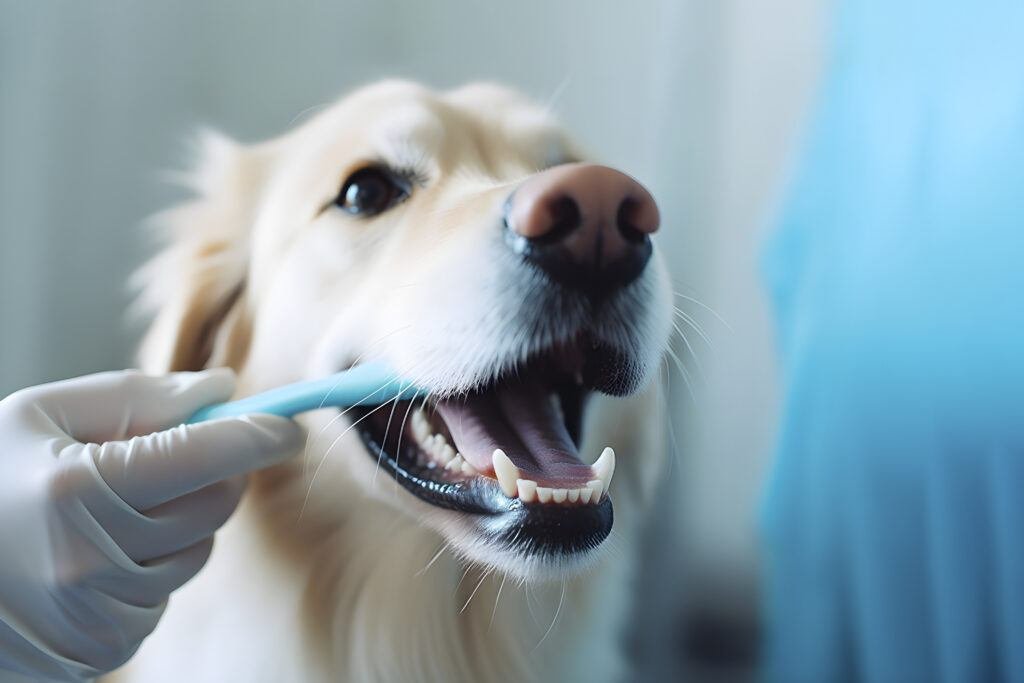
Dental care for your dog is more than just a cosmetic concern. It’s a vital part of their overall health that can prevent serious health issues.
Benefits of Regular Teeth Brushing
Prevention of Periodontal Disease: By regularly brushing your dog’s teeth, you effectively remove plaque and tartar that can lead to periodontal disease. This condition affects the structures around the teeth, including the gums and bones, which can lead to tooth loss if not addressed.
Fresh Breath and Cleaner Teeth: Not only does regular teeth brushing keep your dog’s breath fresher, it also keeps their teeth cleaner. This practice eliminates the bacteria that can cause foul odors, promoting a healthier mouth.
Risks of Dental Diseases in Dogs
Systemic Health Issues: Dental diseases can lead to more serious systemic health problems in dogs, including heart, kidney, and liver disease. Oral bacteria enter the bloodstream and can damage these vital organs.
Pain and Discomfort: Dogs with dental issues often suffer from pain and discomfort, which can impact their quality of life. They might have difficulty eating or playing, showing signs of irritability or depression.
By understanding the importance of dental care, you are taking a crucial step in ensuring your dog lives a happy, healthy, and pain-free life.
Preparing for the Teeth Brushing Session
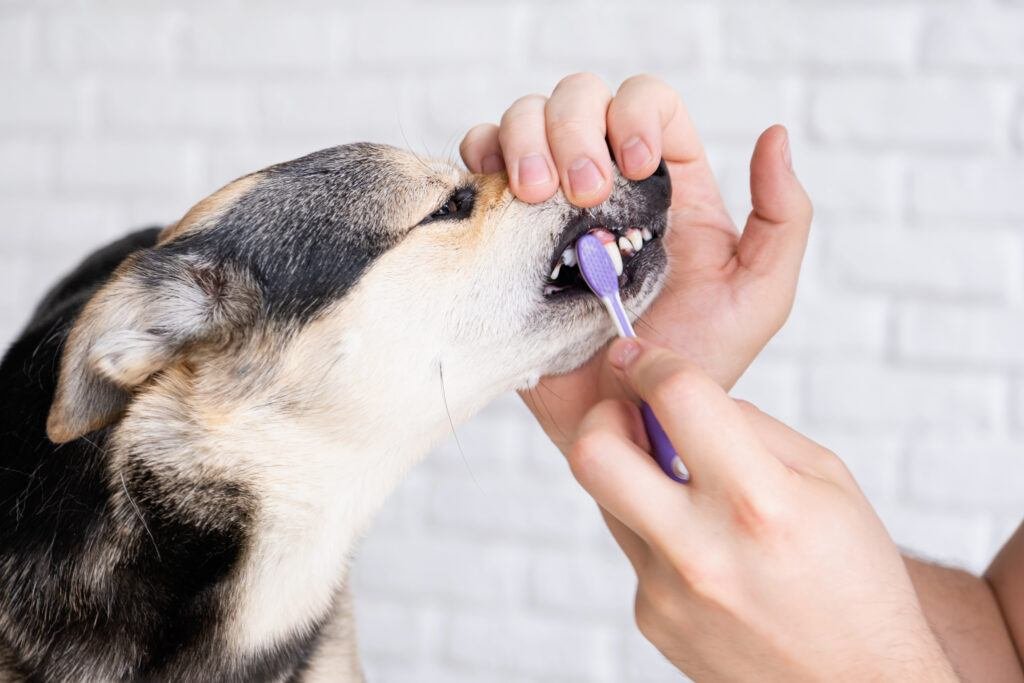
Before introducing a toothbrush to your dog, it’s important to choose the right moment, gather the necessary tools, and acclimatize your pet to the process.
Success lies in how well you prepare.
Choosing the Right Time
Pick a time when your dog is calm and relaxed, ideally after a walk or playtime to ensure they are more willing to sit still during the process.
Establishing a consistent routine can also help your dog know what to expect.
Selecting Appropriate Tools
Your tools should include:
- A dog-specific toothbrush or finger brush
- Dog-specific toothpaste (never use human toothpaste due to ingredients harmful to dogs)
Visit Great Pet Care for detailed descriptions of the types of brushes and toothpastes available.
Introducing Your Dog to Toothbrushing
Start by letting your dog taste the toothpaste to develop a positive association.
Next, gently rub your dog’s teeth and gums without the brush using your finger.
Once they’re comfortable, introduce the toothbrush, allowing them to sniff and lick it.
Executing the Teeth Brushing Technique
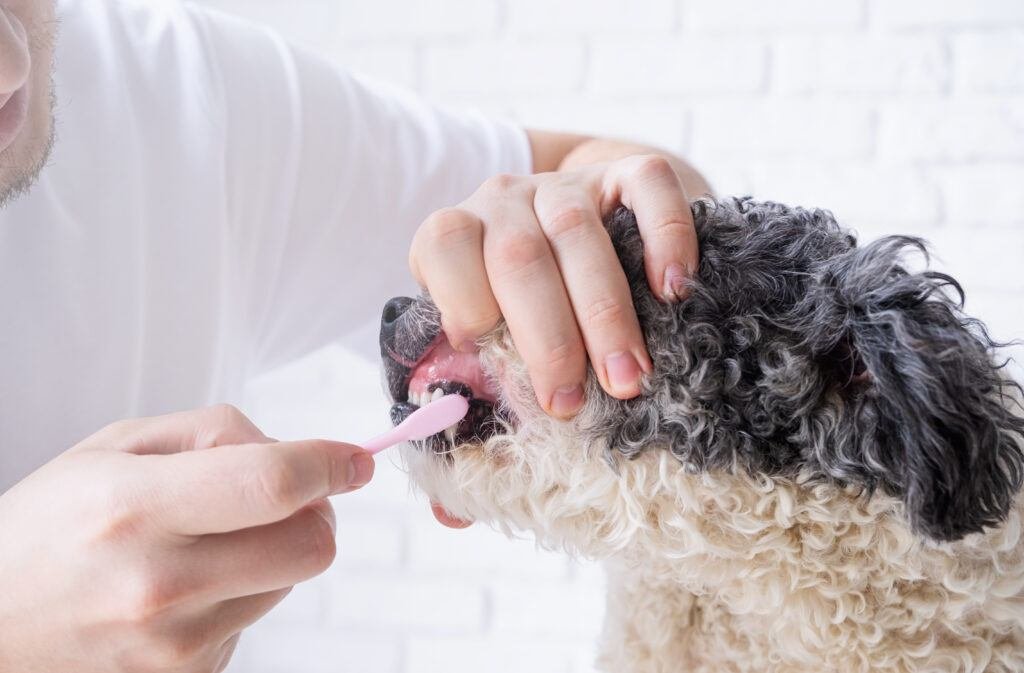
This includes preparing your dog, the actual brushing process, and practices to follow afterwards.
Getting Your Dog Comfortable
Before introducing a toothbrush, ensure your dog is at ease with you handling their mouth.
Use positive reinforcement like treats and praise to associate the experience with rewards.
For initial introductions, you might let your dog taste toothpaste from your finger.
The Brushing Process
When brushing your dog’s teeth, use a toothbrush designed for dogs or a finger brush for better precision.
Angle the bristles at 45-degrees to the gumline and use circular motions.
Focus on the outside surfaces of the teeth, where plaque tends to accumulate.
Start with short sessions, gradually increasing time to cover all teeth.
Post-brushing Practices
After brushing, provide plenty of water and a chew toy to help massage the gums and further reduce plaque buildup.
Consistency is key, so aim to brush your dog’s teeth daily, making it part of their routine.
Regular oral inspections by you and yearly check-ups with a vet are also important.
Establishing a Routine
Creating a consistent routine for brushing your dog’s teeth is essential for their dental health.
Setting a specific time each day will help make this task a regular part of your pet’s care.
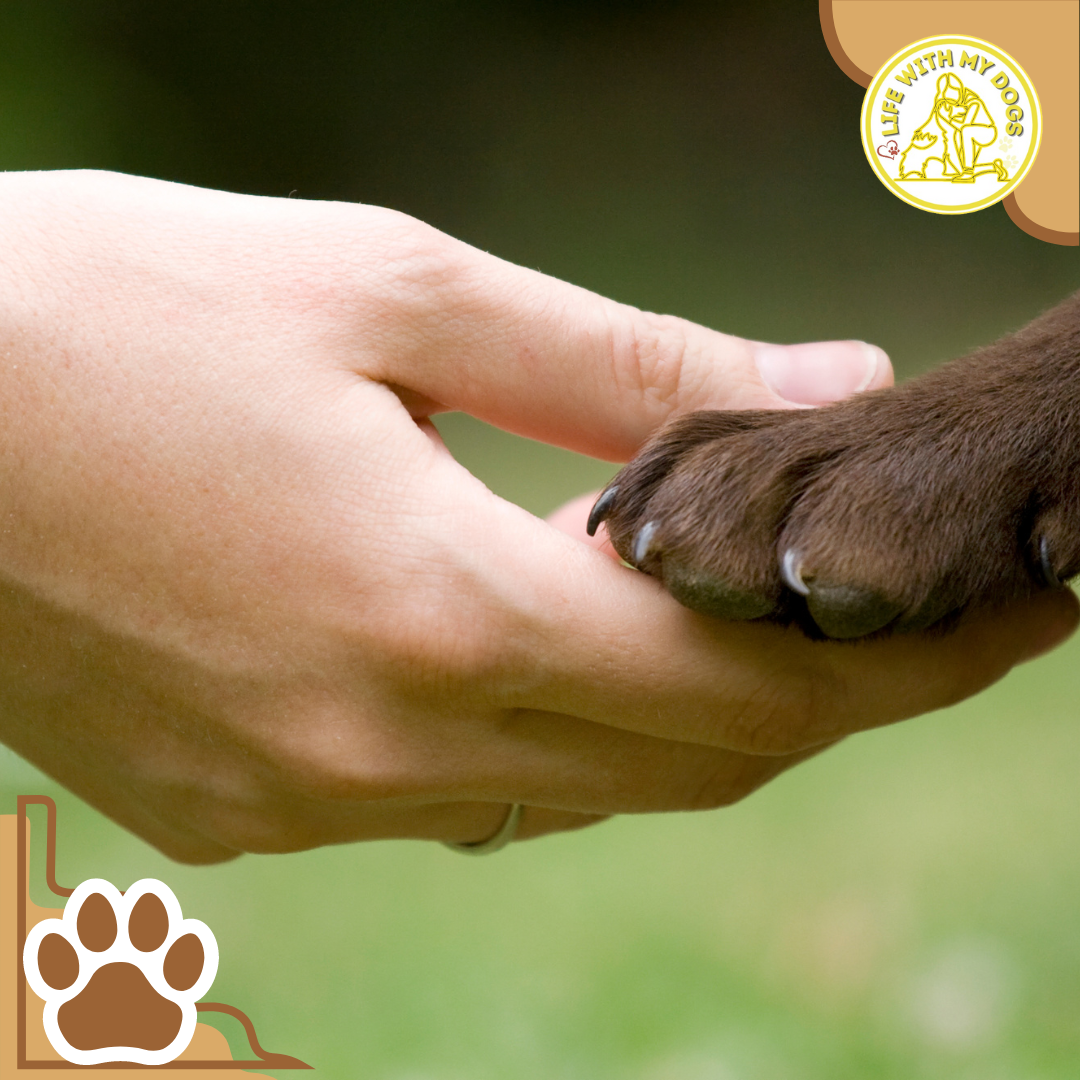
Frequency of Brushing
Ideally, you should brush your dog’s teeth daily to prevent the buildup of plaque and tartar.
Just like in people, regular brushing prevents dental diseases and can avoid costly veterinary treatments in the future.
If daily brushing isn’t feasible, aim for at least three to four times per week.
Making it a Positive Experience
Begin by choosing a calm and quiet time, and gradually introduce your dog to the practice.
Use a special dog toothpaste with a flavor they enjoy to create a positive association.
Always praise your dog and maybe offer a dental-friendly treat post-brushing as a reward.
Remember, patience and consistency are key to making dental care a stress-free part of their routine.
Addressing Challenges
When attempting to brush your dog’s teeth, you may encounter some resistance or challenges. It’s essential to handle these situations with patience and to seek alternative solutions if necessary.
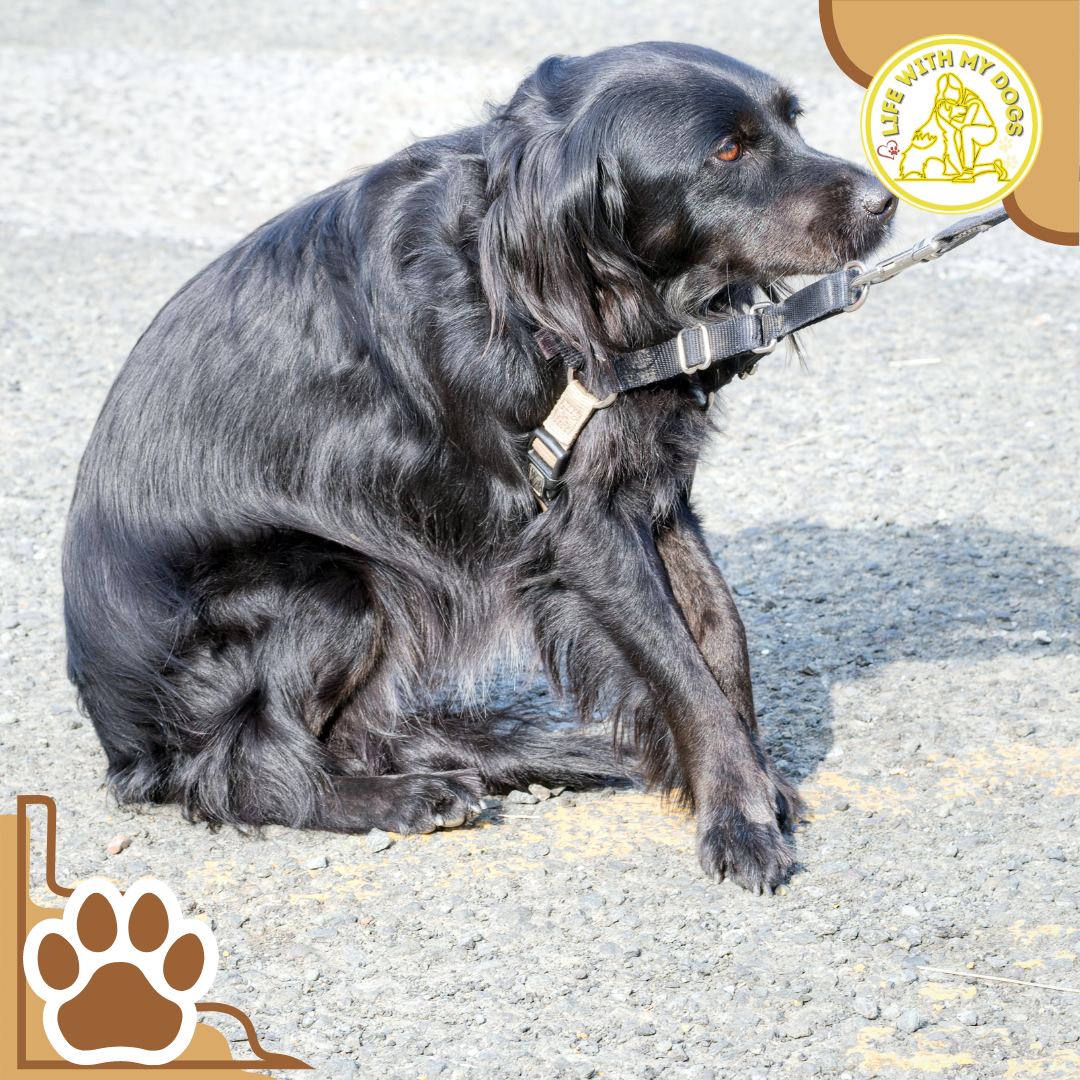
Dealing with Resistance
If your dog is not cooperative during tooth brushing, introduce the process gradually.
Start by using your finger instead of a brush to gently rub the outside of your dog’s teeth and gums.
Reward them with treats after each session to associate the activity with positive experiences.
Build up to using a toothbrush slowly, always monitoring your dog’s comfort level.
Alternatives to Brushing
If brushing remains a struggle, consider alternatives.
Dental wipes can be an effective substitute for a toothbrush.
Dental water additives also offer a hassle-free way to help reduce plaque buildup.
Seek out chew toys and treats designed to promote oral health; they can minimize tartar while satisfying your dog’s natural urge to gnaw.
The Role of Professional Dental Cleanings for Your Dog
While daily teeth brushing is vital for maintaining your dog’s oral health, there’s another essential aspect to consider: professional dental cleanings. Just as we humans visit the dentist for regular cleanings, our furry companions can benefit from professional dental care too.

Advantages of Professional Cleanings
Professional cleanings provide a deeper level of oral care that may not be achievable through brushing alone. Veterinary professionals have the expertise and specialized tools to thoroughly clean your dog’s teeth, removing stubborn plaque and tartar buildup that brushing may not effectively tackle.
- Addressing Dental Issues: Veterinarians can identify signs of dental disease, such as gingivitis or periodontal disease, and take appropriate action to treat these conditions before they escalate during professional cleanings.
- Comprehensive Examination: During these sessions, veterinarians conduct a thorough oral examination. This allows them to assess the overall health of your dog’s mouth, checking for signs of oral tumors, fractured teeth, or other abnormalities that may require further attention.
Incorporating Professional Cleanings
It’s important to note that while daily brushing can help prevent dental issues, it may not entirely eliminate the need for professional cleanings. Even with the most diligent home care, some dogs may still develop tartar buildup or dental problems that require professional intervention.
- Frequency of Cleanings: The frequency of dental cleanings may vary depending on your dog’s individual needs and risk factors. Your veterinarian can provide guidance on the appropriate schedule based on factors such as your dog’s age, breed, and overall dental health.
- Contribution to Well-being: Incorporating professional dental cleanings into your dog’s healthcare routine can significantly contribute to their overall well-being. By complementing regular at-home dental care with these cleanings, you’re taking proactive steps to ensure your dog maintains a healthy and happy smile for years to come.
Keeping Your Dog’s Smile Bright
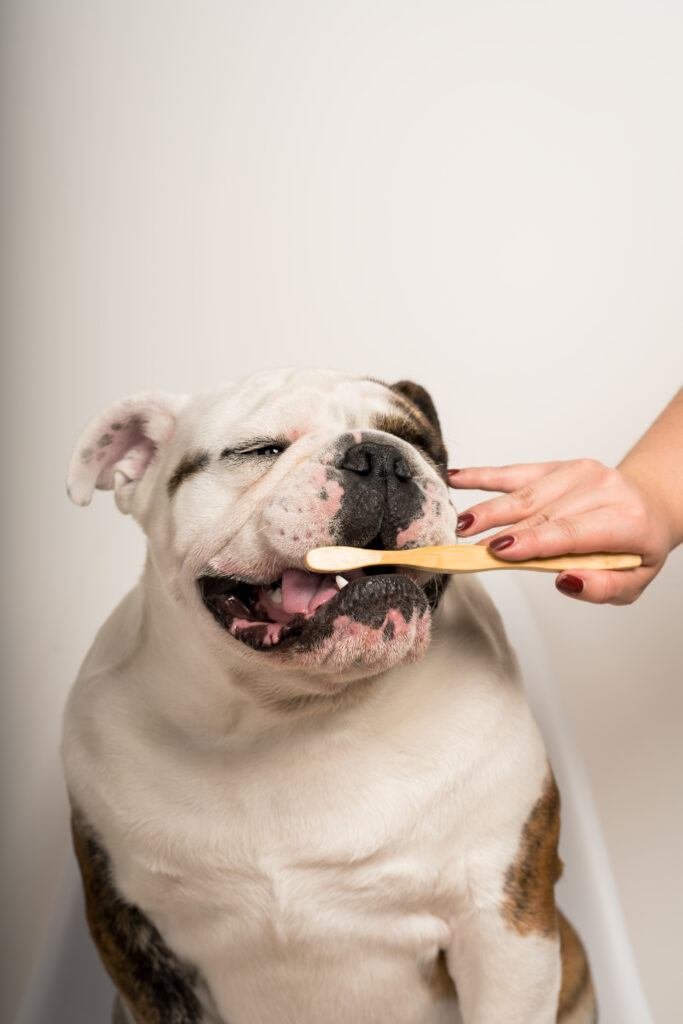
As we wrap up our guide, let’s talk about something close to every pet owner’s heart: their dog’s dental health. You’ve learned about the importance of regular teeth brushing, using the right tools and techniques to keep plaque and tartar at bay. And by sticking to consistent practice and positive reinforcement, you’ve set your furry pal up for success.
We hope this guide has been helpful for you in taking care of your dog’s teeth. Remember, just like with our own dental health, addressing issues early can prevent bigger problems later on. Have you given these techniques a try with your furry friend? We encourage you to make dental care a regular part of your routine, ensuring your dog stays happy and healthy for years to come.
Frequently Asked Questions
In this section, we address common concerns and provide practical advice to help you care for your dog’s dental health effectively.
What is the best way to introduce a toothbrush to my dog?
Begin by letting your dog get accustomed to the idea of a toothbrush without any brushing action.
You can introduce the toothbrush with some dog-formulated toothpaste on it for them to lick off as a first step.
Is it safe to use a human toothbrush for cleaning my dog's teeth?
It’s generally recommended to use a toothbrush designed for dogs as human toothbrushes may have bristles that are too hard and handles that are not angled properly for a dog’s mouth.
What should I do if my dog resists having its teeth brushed?
If resistance is an issue, try to gradually acclimate your dog to the sensation by using a finger to apply the toothpaste and progress to a finger-brush before using an actual dog toothbrush.
How can I effectively clean my dog's teeth without using toothpaste?
You can clean your dog’s teeth without toothpaste by using a damp toothbrush or finger brush to gently rub the teeth and gums.
This removes plaque and stimulates the gums but may not be as effective as using specially formulated dog toothpaste.
What are the risks of not brushing my dog's teeth regularly?
Failing to regularly brush your dog’s teeth can lead to dental disease, which could result in bad breath, painful chewing, and tooth loss. Long-term, these issues can lead to more severe health problems, such as infections that spread to the major organs.
How can I maintain my dog's dental hygiene if I have never brushed their teeth before?
Start slowly by handling your dog’s mouth and teeth with your fingers. Progress to a toothbrush over time.
Maintain a consistent routine and use treats to create a positive association with brushing your dog’s teeth.
Unleash Your Dog’s Best Smile!
Join our vibrant community of dog lovers at LifeWithMyDogs.com and explore our social media channels for exciting content, product reviews, and expert advice on dog dental care and overall health:
Facebook: LifeWithMyDogs
Instagram: LifeWithMyDogs2
Pinterest: LifeWithMyDogs2
Twitter: LifeWithMyDogs9
YouTube: LifeWithMyDogs830
Connect with experienced dog owners, discover top-notch dental care tips, and be part of a community passionate about your furry friend’s well-being! #DogHealth #DentalCare #LifeWithMyDogs
More Interesting Reads


